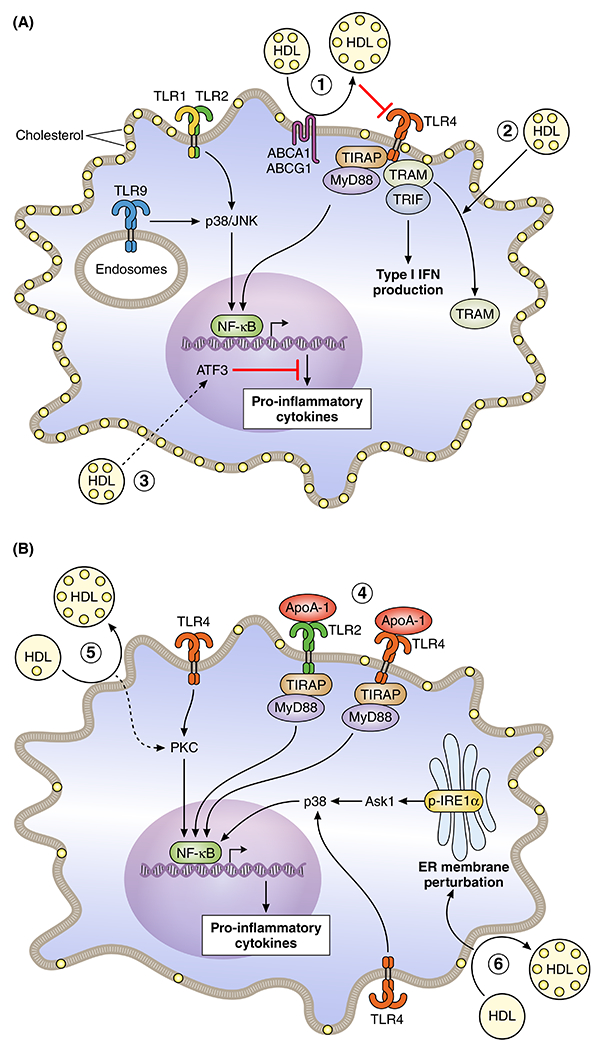Figure 1 –

Anti-and pro-inflammatory effects of HDL in Macrophages
A. Anti-inflammatory effects. 1. HDL induces cholesterol efflux mediated by the cholesterol transporters ABCA1 and ABCG1, leading to a decreased TLR4 surface expression and decreased downstream MyD88 and TRIF signaling, suppressing the NF-κB and type I IFN response, respectively. 2. HDL stimulates the translocation of TRAM from the plasma membrane to intracellular compartments, reducing its availability for TRIF signaling and diminishing type I IFN production. 3. HDL induces Atf3 expression as such suppressing TLR9 or TLR1/2 induced inflammatory gene expression downstream of NF-κB. Dashed arrow indicates that the exact mechanism is unknown. Yellow dots indicate free cholesterol and in the case of HDL, particle free cholesterol enrichment because of cholesterol efflux. B. Pro-inflammatory effects. 4. ApoA-1 binds to TLR2 and TLR4, enhancing MyD88 signaling and NF-κB activation, and TRIF signaling (although not shown). 5. HDL induces plasma membrane cholesterol depletion, augmenting PKC signaling and downstream NF-κB activation induced by a TLR ligand. 6. HDL induces excessive cholesterol depletion, leading to ER membrane perturbation and enhanced IRE1a/ASK1/p38 MAPK signaling, which augments NF-κB activation in the presence of LPS (shown as TLR4 activation). Dashed arrows (in A and B) indicate that the exact mechanism is unknown.
